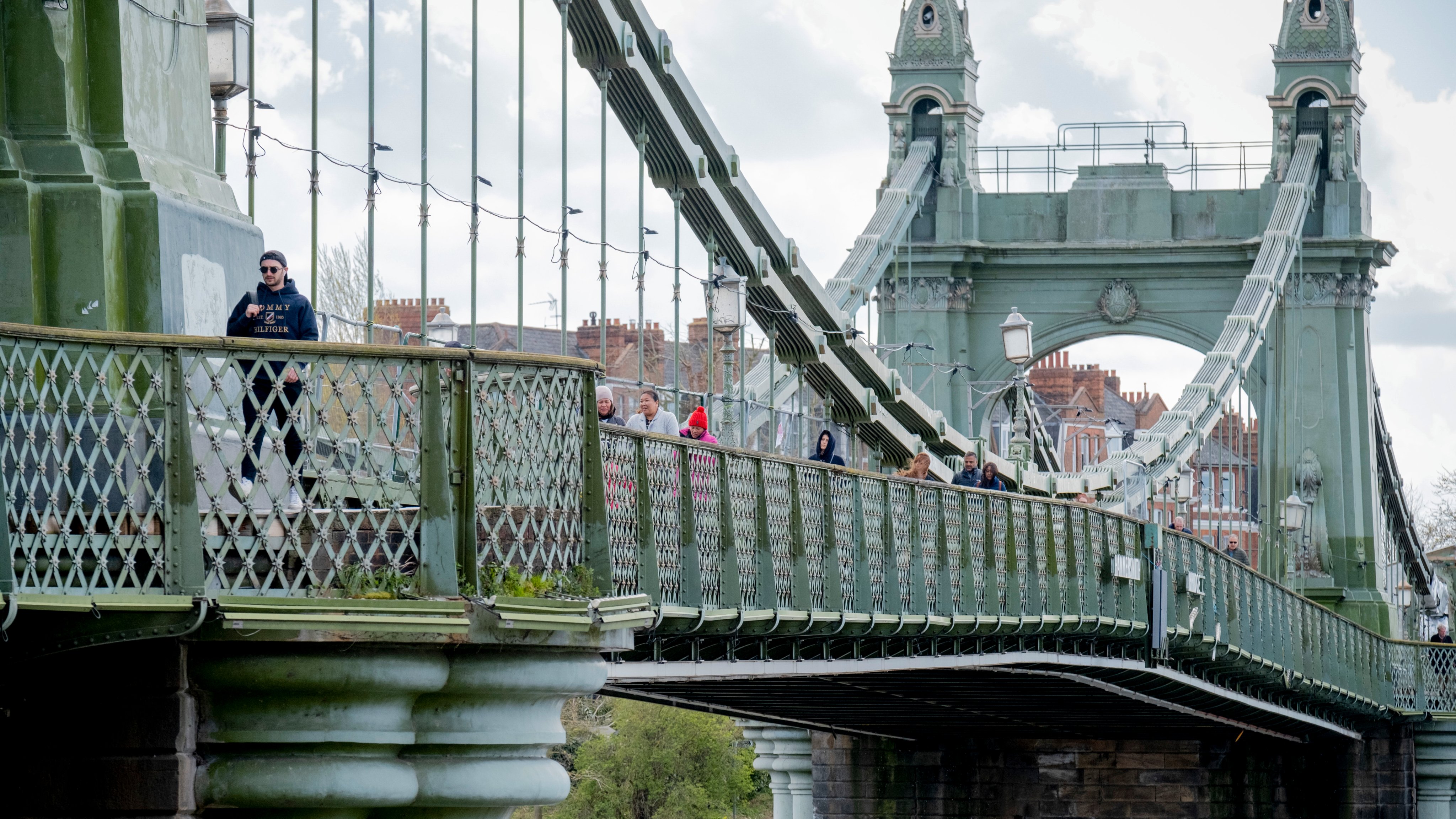The current heat wave has already triggered the hottest day in the country’s history (this Tuesday) and calls for extreme measures to protect historic structures as well. The Hammersmith Bridge, built in the Victorian era, has even been wrapped in huge pieces of protective foil in recent days, given concerns about cracks in the bridge.
The bridge, one of those built over the Thames, in this case in 1887, was already in poor condition and since 2020 it has only been used for pedestrians and bicycles, while repair works worth 140,000 pounds sterling (164,000 euros) were being carried out. . However, the extreme heat has brought additional concern, according to several international newspapers.
For this reason, as some photographs show, Hammersmith now has several sections covered with aluminum foil, with the aim of preventing the cracks in the bridge from increasing in size due to the heat and damaging the stability of the structure.
Reporting this beautiful morning as Hammersmith Bridge prepares for today’s extreme heat, wrapped in aluminum foil to prevent overheating. @BBCRadioLondon pic.twitter.com/DyQoiZgvMm
— Greg McKenzie (@GregMcTweets) July 18, 2022
Since 2020 there is already a temperature control system that costs about 420,000 pounds (or 492,000 euros) to keep the metal cold.
As explained by the Fulham City Council (responsible for the bridge), quoted by the New York Times, a kind of “giant air conditioning” placed on the chains that connect the different parts of the bridge. Those must be kept at relatively low temperatures, and if they reach 18 degrees, the bridge will need to be closed, according to Fulham officials.
The Hammersmith Bridge has been wrapped in giant pieces of aluminum foil to prevent temperatures from overheating. An insulating silver sheet has been placed over the structure to protect it from the sun and keep the bridge open.
A £420,000 climate control system is also on at night. (2/4) pic.twitter.com/rn3XZ1YAbY
— Sascha Mullen (@SaschaMullen) July 17, 2022
Overnight, to contain the potential damage from an even bigger-than-expected heat wave, engineers positioned the pieces of aluminum foil to reflect light rather than heat the bridge.
“The safety of the public is our first priority,” says Sebastian Springer, the engineer responsible for the project, quoted by the BBC. “The temperature control system allows us to follow temperature peaks and keep them constant. Now that we are dealing with extreme heat, we are coming up with innovative solutions to keep the temperature within normal.”
According to the Government website, there have already been “microfractures” detected in the bridge for some time, and some may even date back to the construction of the bridge itself and be manufacturing defects. “Given the poor condition of the bridge”, says the British executive, an acoustic monitoring system is even used to follow the evolution of the material. In August 2020, using this system, it was observed that one of the 13 known cracks had grown, so it was decided at that time to close the bridge to traffic.
Source: Observadora
